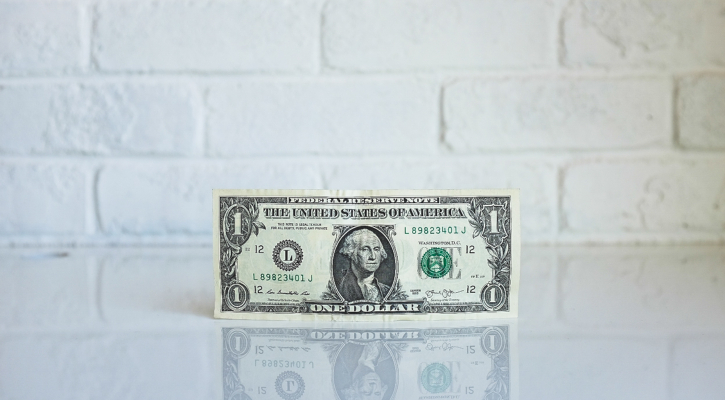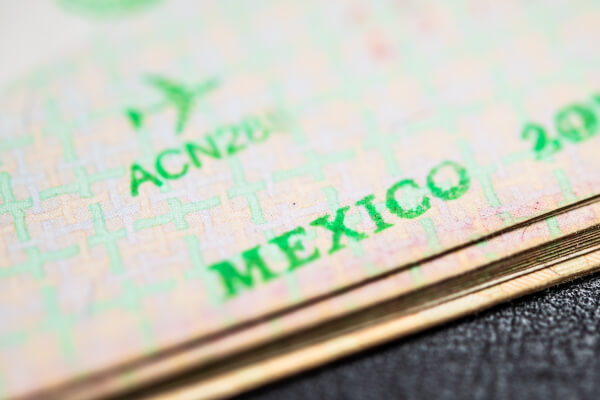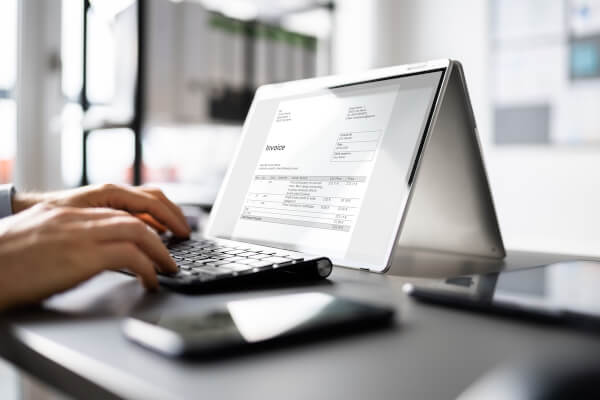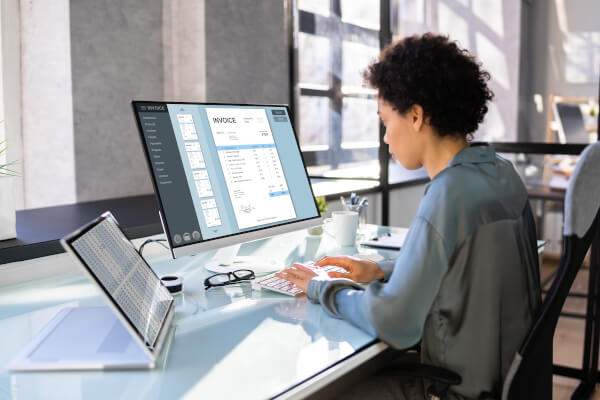How to Hire Independent Contractors in Mexico | Legal Guide & Best Practices
Learn how to hire and pay independent contractors in Mexico. This article also includes an FAQ and best practices about working with contractors in Mexico.

There are many reasons why putting your products on Amazon might be a good move for your business – it’s one of the internet’s most visited sites, after all. For international reach, it’s hard to beat. Amazon Global offers a huge range of products shipping from the US to countries around the world.
As you might expect with such a massive company, though, things can get complicated. And potentially expensive, too, if you choose options that aren’t right for you. So take a look through this guide to navigating Amazon seller fees, for international sales as well as domestic ones.
| If you sell on multiple Amazon marketplaces, you can withdraw your different currency earnings directly into a Wise Business account. This way, you’ll avoid paying high currency conversion fees. |
|---|
| Discover Wise Business today |
Wise Business knows that sellers all over the world run into complicated fee systems that can be hard to work out. Which is why we put together this guide to help you navigate the world of Amazon seller fees.

Amazon groups products into broad “categories” like books, clothing and accessories, electronics, or fine art. In many of these categories, sellers can sell products without getting official approval from Amazon. In other categories, approval is needed.¹
This article is primarily talking about selling on Amazon Marketplace, the area of Amazon where independent people or businesses can sell their products as “third parties.” Sales like this account for more than 40% of Amazon’s sales these days, so the potential for you and your business could be significant.
One size doesn’t fit all, though. You’ll have a lot of choices to make as a prospective seller on Amazon. Do you want to sell as a “Professional” or an “Individual”? Do you want Amazon to “fulfill” your orders, or do you want to do that yourself? What’s the most cost-effective way for you to do all this? As you’ll see, every case is a little different.
This article cover the difference between most of those options, and the fees attached to them.

Amazon is a platform through which you can more or less run an entire business, if you want to. So it’s no surprise that, yes, there are a considerable range of fees you’ll probably have to pay Amazon – and other costs that you might also end up facing. Let’s go through all of the fees, as well as itemizing a few extra concerns to bear in mind.
You’ll find that Amazon Seller fees can be broadly split into 7 categories:
1. Account fees
2. Referral fees
3. Closing fees
4. FBA fees
5. FBM fees
6. Amazon Prime
7. Misc fees
This article will go through each section and the fees associated in each category. But here’s a table with a breakdown of each of the fees you’ll encounter.
Here’s an overview of the fees if you’re planning on selling on Amazon. There’s more information on each of the fees as you read through the rest of this article.
| Amazon Seller Fee | Who pays | Fee |
|---|---|---|
| 1. Account subscription fee² | Professional sellers | $39.99/month |
| 2. Account per-item fee² | Individual sellers | $0.99/item |
| 3. Referral fee⁴ | All sellers | Between 3-45% of the sale price (often min $1) |
| 4. Closing per-item fees⁴ | Media item sellers | $1.80/item |
| 5. FBA fulfillment fees | Sellers using FBA | $39.99 a month + selling fees |
| 6. Multi-channel fulfillment fees (optional) | Sellers using FBA for sales made on other platforms | Variable depending on number of units, item size and delivery speed |
| 7. FBA inventory placement service fees (optional) | Sellers using FBA who want their products stored in various fulfillment centers | Per-item fee that varies depending on weight and size of item |
| 8. FBA export fees (optional) | Sellers using FBA who want international shipping | No fee |
| 9. FBA vs FBM referral fees | FBM sales | Slightly higher referral fees for FBM sellers than FBA because you’ll pay a cut of both the shipping fee and the sale price |
| 10. FBM domestic shipping credits | FBM domestic orders | You’ll end up paying any difference out of pocket between the shipping charged and your actual shipping costs |
| 11. FBM international shipping credits | FBM international orders | You’ll end up paying any difference out of pocket between the shipping charged and your actual shipping costs |
| 12. High-volume listing fees | A small percentage of sellers | $0.005 per eligible listing when you reach over 100,000 listings |
| 13. Refund administration fees | Sellers refunding a payment | 20% of the referral fee or $5 – whichever is lower |
| 14. Rental book service fees⁴ | Sellers leasing out textbooks | $5/textbook |

The first fee you’ll encounter as an Amazon seller is also the most basic decision that you’ll have to make. Do you want to sell as a “Professional” or as an “Individual”?
Amazon offers these 2 different selling plans, and the type of account fee you pay is based on this choice. It’s an important decision to get right, but it shouldn’t be a particularly difficult one for most sellers.
| Amazon Seller Account Fees⁴ | Who pays | Fee |
|---|---|---|
| Monthly subscription | Professional sellers | $39.99/month |
| Per-item | Individual sellers | $0.99/item |
If you’re likely to sell more than 40 items a month, the choice is a simple one – “Professional” is the way to go, because it’ll work out cheaper.²
If you’re looking to do a lot of business through Amazon, you’ll almost certainly want to go Professional, which is a flat fee of $39.99 each month – in effect it’s a subscription fee.
If you do this, you don’t have to pay a fixed per-item fee like Individuals do. Going Pro also offers up some extra categories in which you can sell, and there are other benefits too, including the ability to customize shipping rates, list items in bulk, and potentially offer special promotions.
That means that if you’re not quite sure if you’ll make it to 40 sales per month or not, but you’re still serious about the whole process, then it might be worth choosing “Professional” anyway.²
To sell as an “Individual” you’ll have to pay $0.99 to Amazon for every single item that you sell. That’s an okay deal if you’re only planning on selling less than 40 items a month, but costly if you hope to sell a lot.
Individuals don’t have as many benefits as Professionals, either: you can sell in more than 20 categories, but are barred entry from several more. In some categories you might have to get approval from Amazon, whereas a Professional wouldn’t have to.³

This is the major variable fee on each item you sell. Because Amazon funnels customers to you, they want to get paid.
In essence, you can think of an Amazon referral fee as a commission. Every time you make a sale through Amazon, a cut of it goes to them rather than you. It’s the price you pay for having them set you up with your customer.
Now that you know Amazon takes a cut, you probably want to know how much that referral fee actually is.
Guess what? It varies.
Below, as an example we’ve listed just a few categories you’ll find so you can get a feel for the sort of costs you’re likely to face.
Most fees are in the range of percentages that the table shows, with the one notable exception being accessories for Amazon devices such as Kindles – on which you have to pay a somewhat greater referral fee of 45%.
Products that do not clearly fit within existing categories cost 15%, with a minimum of $0.30.
| Category | Amazon Referral fee⁴ |
|---|---|
| Amazon device accessories | 45% of per-item price or $0.30 minimum |
| Books | 15% of total combined sale price (not per-item price) |
| Clothing and Accessories | |
| Consumer Electronics | 8% of per-item price or $0.30 minimum |
| Gift Cards | 20% of per-item price |

If you’re selling a Media item, there’s an additional fixed fee on each sale. Media items are in one of these categories: books, DVDs, Music, Software and Computer or Video Games, Video, Video Game Consoles.⁴
For every item in those categories that you sell, you have to give Amazon an additional $1.80.
| Amazon Seller Closing Fees | Who pays | Fee⁴ |
|---|---|---|
| Closing per-item fees | Media item sellers | $1.80/item |
This used to be called a “variable closing fee” or VCF, but it’s not really variable, which is one reason it’s no longer called that.

To know what FBA is and whether or not it’s your cup of tea, you’ll also need to know what FBM is.
“Fulfillment” basically refers to the whole process that comes after a sale is made: packaging, shipping, customer service, even returns. Of course, Amazon’s fulfillment capabilities are world-famous, and they pride themselves on great customer service. So having Amazon handle fulfillment for you could be an ideal solution.
But of course, there’s a price attached to FBA – several, in fact.⁵ Just remember that, while it can get costly, FBA could also save you both time and money, by cutting down your own costs in logistics and so on. On the other hand, if you already have all of that up and running, or if you want to keep close control of everything, FBA might not look like such a good deal.
Some sellers list the same product as both FBA and FBM, meaning that it’s possible to give customers both options. And secondly, FBA also allows for “multi-channel fulfillment,” which means that Amazon can fulfill orders that are placed through retailers other than Amazon.⁶
But, of course, there are varying fees that come with both options. So we’ll break those down into 2 sections. First FBA fees. And then FBM fees.

| Amazon FBA Seller Fees | Who pays | Fee |
|---|---|---|
| FBA Fulfillment | Sellers using FBA | Fee varies depending on an item’s category, size and weight. It’s sometimes referred to as the “pick and pack” fee. |
| FBA Monthly Inventory Storage | Sellers using FBA | Based on your daily average volume of inventory measured in cubic feet. |
| Multi-channel fulfillment fees (optional) | Sellers using FBA for sales made on other platforms | Variable depending on number of units, item size and delivery speed |
| FBA inventory placement service fees (optional) | Sellers using FBA who want their products stored in various fulfillment centers | Per-item fee that varies depending on weight and size of item |
This fee is charged on every unit that’s sold via FBA. It varies according to size and weight. The lowest cost per unit is $3.22 for a small standard-size item, while for a “special oversize” item you could have to pay $158.49 + $0.83/lb above first 90 lb.⁵
This might sound very expensive, but remember: Amazon’s FBA fees mean you don’t have to pay for shipping to the customer, or any other fulfillment costs.
With FBA, you don’t have to ship to the customer, but you do have to ship your products to Amazon warehouses. You can do this in bulk, though, which should be considerably cheaper than doing it one at a time.
Once your stock is in Amazon’s warehouses, it has to stay there until someone buys it. So, logically enough, you’ll need to pay a storage fee. This is a monthly fee, and it’s charged per cubic foot.
The monthly storage fee changes in October in the runup to Christmas. From January to September Amazon charges $0.87 per cubic foot for standard-size items or $0.56 for oversize items, but in October to December that rises to $2.40 or $1.40.⁷
If you opt for FBA, you open up the possibility of using MCF (Multi-channel fulfillment). Being as big as it is, Amazon is able to offer to fulfill not just the orders you receive through Amazon itself, but also orders you get through your own website or even competitors like eBay.
MCF is available in the US and 8 other countries including Canada, Mexico, the UK, and Japan. As you’d expect, there’s a cost per item, which varies according to the number of items, the size and weight, and of course the delivery time. Standard delivery of a single small item costs $5.85 via MCF. That’s for domestic delivery – expect to pay more to export overseas.⁶
This is another FBA fee, and it concerns where Amazon stores your products. Often with FBA, Amazon gets you to send your product to a variety of places around the country – “distributed inventory placement,” as they call it. But the inventory placement service means you can send everything to a single “receive center.” Amazon may then redistribute things from there.
This can have advantages, simplifying the process for you and potentially enabling you to deal with more convenient locations – although you can’t actually choose the location yourself.
Costs range from $0.30 for a standard-size, lightweight item, to $1.30 for an oversize, heavy item, with the cost increasing by $0.20/lb after the first 5 lb. That’s per item – so it could end up getting costly.⁹
One final note about FBA – but this one isn’t actually a fee. Via “FBA export,” Amazon sellers can make their products available to Amazon’s international market. Because Amazon handles shipping, you don’t have to worry about the complexities of international trade. There isn’t an extra cost to you – although there probably is to the customer.
You might find you’re automatically enrolled in FBA export. You can check via your Export Settings in Amazon Seller Central. You can choose whether or not to allow your products to be sold internationally.¹⁰
| 🔍 Interested in FBA? Read the guide on how to start an Amazon FBA business. |
|---|

| Amazon FBM Seller Fees | Who pays | Fee |
|---|---|---|
| FBM vs FBA referral fees | FBM sales | A cut from both the shipping fees and the sales price |
| FBM Fees (Amazon Merchant Fulfilled Fees) | Sellers using FBM | Nothing additional |
| FBM domestic shipping credits | FBM domestic orders | You’ll end up paying any difference out of pocket between the shipping charged and your actual shipping costs |
| FBM international shipping credits | FBM international orders | You’ll end up paying any difference out of pocket between the shipping charged and your actual shipping costs |
Whether you choose FBA or FBM, you still have to pay the referral fee at the same rate. There’s a slight difference between how much this will be, though – a difference that relates to shipping fees.⁸
If your product is sold via FBA, you’re not involved in shipping, so you’re not involved in the shipping fees either. Amazon collects whatever shipping fee from the customer and keeps it all. But if you sell something via FBM, then you ship it yourself, so Amazon passes the shipping fee on to you.
Or rather, Amazon passes most of the shipping fee on, but not all – some of it goes to Amazon as part of the referral fee. That’s because the referral fee is a percentage of the total sales price,⁴ not just the item cost. And for FBM sales, that total sales price includes the shipping fee.
Which means for FBM sales you can expect to see a slightly higher referral fee than for FBA sales, because you have to pay a cut of both the shipping fee and the sale price.
This section has mainly been about FBA fees. But what about FBM? Are there any extra fees for that?
The short answer is no. There aren’t any extra fees you have to pay Amazon if you fulfill your orders yourself. Although you'll, of course, have responsibility for all the costs associated with storing, packaging, and delivering the products yourself, as well as handling any returns.
This isn’t a fee as such, but it’s an aspect of the payment system that you’ll need to know about – and one that may end up costing you money.
FBM sellers handle shipping themselves, but that doesn’t mean they’re in control of what the shipping fees are. Individual sellers, and Professional sellers in media categories, are subject to Amazon’s standardized shipping rates. That’s $3.99 for standard shipping on a book, for example, if you’re an Individual seller.
Amazon charges the customer for that amount, and passes it onto you as what’s known as a “shipping credit.” But, of course, you’ve been responsible for shipping the order yourself and your shipping cost is unlikely to be exactly $3.99 or whatever the amount is that you receive. The cost may even be greater than that, meaning that you make a loss on the shipping.
So, is there a way to solve that problem? Amazon recommends that you “adjust your shipping charges or the price of your product.”¹⁵ So, essentially, it’s your problem.
Shipping internationally with FBM? The process is exactly the same as with domestic shipping credits – except that the numbers are higher. For international shipping of a book at a standard rate, for example, Amazon’s default shipping fee is $16.95, or $24.95 if it’s a particularly heavy book. So that’s the amount you’ll receive as a shipping credit.¹⁵

Having dealt with the main fees, here’s a look at a few other things you’ll need to bear in mind when selling on Amazon.
You probably already know a little about Amazon Prime. For a yearly subscription fee, customers can join Amazon Prime and get free shipping and various other perks. It’s a hugely popular scheme and attracts many of the most committed Amazon customers. But how do you take advantage of it, as a seller?
This is easy enough. If you use FBA, your products should automatically be Prime eligible. It’s up to Amazon to fulfill the order in keeping with Prime’s high standards.¹³
This is not so easy. But if you’re well-established as an Amazon seller and you fulfill your own orders, you might be able to enroll in Seller Fulfilled Prime (SFP). This means your FBM products will be Prime-eligible, even though you deliver them yourself.
You have to pass a trial period, have exemplary seller statistics, use approved carriers, and so on, so it’s not for everyone. But if you qualify, it could be worth it, as that little Prime check mark by your products is worth a lot. On the other hand, your Prime customers won’t be paying for shipping – so you’ll have to bear the whole of that cost yourself.¹⁴
Don’t sweat this one. There aren’t any special seller fees for Prime: it’s part of the deal if you use FBA, and there are no extra costs either for SFP. Although, as just mentioned, SFP could still wind up costing you a lot, given that your customers won’t be paying for their shipping.

The fees until this point are the ones you’ll probably have to spend most of your time thinking about, but here are some more that it’ll pay to know about in certain circumstances.
| Misc. Amazon Seller Fees | Who pays | Fee |
|---|---|---|
| High-volume listing fees | A small percentage of sellers | Sellers with more than 100,000 non-media items that haven’t sold in over 12 months, but have been listed for longer than that will pay $0.005 per applicable item |
| Refund administration fees | Sellers refunding a payment | 20% of the referral fee or $5 – whichever is lower |
| Rental book service fees | Sellers leasing out textbooks | $5 per textbook |
Firstly, don’t start worrying yet. Amazon doesn’t charge a true “listing fee,” in that it’s free to actually publish your listing on Amazon.
But you do have to pay a monthly high-volume listing fee if you offer over 1.5 million SKUs.
Anything above this limit will be charged at $0.001 per eligible SKU to cover system costs.⁴
It’s designed to reduce the use of Amazon warehouses for storing products that don’t really need to be in stock anymore. Which means that, hopefully, it isn’t likely to affect a majority of sellers. But you should remember it exists.
From time to time, a customer might be unsatisfied with your product or want to return it. Or maybe even something else could go wrong. In these cases, you may need to issue a refund. But remember, you won’t actually have received the whole of the customer’s payment, because Amazon will have taken a cut as the referral fee.
Thankfully, Amazon gives you the referral fee back when you make a refund – but they do retain some of it as an administration cost. They charge either $5 or 20% of the referral fee – whichever is lower.⁴
We’re getting pretty specialist now, so if you’re not in the textbook rental business you can skip ahead.
But if you're using Amazon to rent out textbooks, then take note: you’ll have to pay them $5 every time.⁴

If you’re in the process of expanding your online sales and have just read through all of the above fees you could run into, you might find yourself weighing up Amazon and eBay against each other.
There’s more to consider here than just the fees, though – there’s also:
As for fees, it’s hard to say, because there are real differences between the two services. Where to Sell Online¹¹ tested a few comparable cases and found eBay was generally cheaper for the seller, so that’s certainly something to bear in mind.
But when you’re deciding which platform to start selling on, make sure you’re looking at the big picture and not just the sales fees.

When it comes to international sales, FBA could be an especially attractive option if you don’t know where to begin. Amazon could handle the fulfillment process for you so that you don’t have to get so involved in international exports. But if you’re tempted by this, it’ll pay to keep a close eye on the prices. High shipping fees, which you may have little control over, might end up making your product unaffordable to customers overseas.
Fees like the ones you find in this article are only compounded when it comes to sending and receiving money internationally, which you could well have to do if you’re doing business abroad. In that case, Amazon will already be taking enough from you – so don’t let the banks take even more. Take a look at Wise Business for some of your unique global business needs.
| 💡 Wise Business offers international transfers at the mid-market exchange rate – the same rate the banks use between themselves – and only charges a simple upfront fee. You can withdraw your different currency earnings from Amazon directly into your Wise account. This way, you’ll avoid paying high currency conversion fees. |
|---|
Discover Wise Business -
Easy to set up, easy to use
It’s perfectly suited to help businesses with cross-border payrolls and international payments, allowing you to pay and get paid just like a local.
There’s no need for complex fee tables. Just simple, low pricing.
¹Product category approvals
²Fees
³Amazon Seller Page
⁴Fees - additional
⁵sellercentral.amazon.com
⁶FBA
⁷sellercentral.amazon.com
⁸how-amazon-referral-fees-work
⁹sellercentral.amazon.com
¹⁰sellercentral.amazon.com
¹¹amazon-vs-ebay/
¹²amazon.com/become-amazon-vendor
¹³amazon.com/fulfillment-by-amazon
¹⁴amazon.com/services/seller-fulfilled-prime
¹⁵sellercentral.amazon.com
All sources checked February 2024.
*Please see terms of use and product availability for your region or visit Wise fees and pricing for the most up to date pricing and fee information.
This publication is provided for general information purposes and does not constitute legal, tax or other professional advice from Wise Payments Limited or its subsidiaries and its affiliates, and it is not intended as a substitute for obtaining advice from a financial advisor or any other professional.
We make no representations, warranties or guarantees, whether expressed or implied, that the content in the publication is accurate, complete or up to date.

Learn how to hire and pay independent contractors in Mexico. This article also includes an FAQ and best practices about working with contractors in Mexico.

Learn how to navigate the overseas worker recruitment. Discover legal requirements, sourcing strategies, visa compliance, and tips for international hiring.

Paying overseas vendors is common, but the hidden costs of B2B cross-border payments aren’t. Learn how to simplify international business payments today.

B2B payment processing doesn’t have to be hard. Learn how growing businesses can simplify cross-border transactions, streamline invoicing and get paid faster.

Discover strategies to enhance B2B payment security, reduce fraud risk, and protect cash flow using secure digital payment methods and automated workflows.

B2B payment automation helps small businesses save time and reduce costs. Read about how automation replaces manual tasks and boosts accuracy and cash flow.